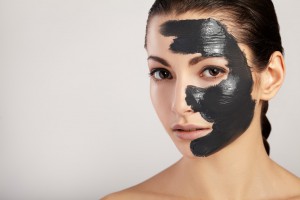 Active carbon, also known as activated carbon or charcoal, so far has been associated with the energy industry rather than cosmetic. Today, carbon is one of the most desired ingredients of soaps, masks and exfoliating scrubs. Do you know everything about this element?
Active carbon, also known as activated carbon or charcoal, so far has been associated with the energy industry rather than cosmetic. Today, carbon is one of the most desired ingredients of soaps, masks and exfoliating scrubs. Do you know everything about this element?
Activated charcoal reigns in almost equally in medicine and in cosmetology. Its valuable qualities have been known for centuries. Aborigines and Africans have discovered its wide variety of applications. The carbon compresses were used to extract poison after the bites of poisonous snakes, spiders or rabid animals. In contrast, Indians used charcoal to treat allergic reactions for instance, to poison ivy. They were the first to use charcoal internally for stomach problems, which has survived to this day. In pharmacies, we will buy activated carbon as a digestive medicine.
What exactly is activated carbon?
Activated carbon is obtained from … production waste. Most often as a result of processing charcoal, but also shells or seeds. This is extremely valuable for our skin and hair. We know it in the form of a black, odourless substance with an amazing absorption. It can absorb up to 1 thousand times more toxins than its own weight! It is one of the purest forms of coal. The cosmetics use mainly coal dust, which can also be used as a semi-finished product to create your own DIY cosmetics.
Its advantages include:
- 100% naturalness,
- very easy accessibility,
- versatile application.
The properties of activated carbon
Activated carbon is really a versatile cosmetic component. First of all, it attracts all impurities, so it is an excellent detoxifying agent. The effect of activated carbon can be compared to the effect of a filter that absorbs toxins, thus cleansing the skin. It unclogs pores and reduces the secretion of sebum, so with the regular use of cosmetics with active carbon we can have fewer problems with comedones. It’s an anti-inflammatory ingredient, so it works well in treating acne. In addition, it also speeds up skin regeneration processes, promotes exfoliation of dead skin and has a mildly whitening effect.
To sum up, active carbon:
- detoxifies,
- is anti-inflammatory,
- supports exfoliation of the epidermis,
- cleanses and brightens the skin,
- regulates the secretion of sebum,
- works anti-acne,
- has antibacterial properties,
- refreshes.
Activated charcoal in skin care
It is an all-natural cosmetic ingredient, which is why you will see it in many different cosmetics – masks, scrubs, washing gels. It works perfectly on oily, combination or acne skin, but there are no contraindications to its use on normal, dry or sensitive skin. It is only reasonable to choose the concentration of activated carbon in cosmetics for the problems that we want to remedy. If we do not have many blackheads and acne, we do not have to cleanse the skin so much. Activated carbon applied to the dry skin without any additives can additionally dry it out, because it deprives it of sebum – it is better to use it with other products.
Active carbon in hair care
Only a few people know that in addition to the positive action of active charcoal on the skin, it also affects the condition of the hair. What’s more, you can buy hair shampoos with activated carbon or trichological peels enriched with it. This ingredient works great on scalp – it cleanses, provides antifungal effects, soothes irritations and regulates the secretion of sebum. This means that cosmetics with active carbon help in the fight against dandruff and greasy hair. If we want to cleanse the scalp well, activated carbon will be a good solution.
Active carbon in oral care
Did you know that active carbon can also be found in toothpaste? Or you can add it to whiten it without damaging the enamel. Activated charcoal copes greatly with the yellow plaque on the teeth, because it absorbs tannins from the tooth surface. They are responsible for the unsightly discoloration. It is worth having an ecological toothpaste with active carbon to brighten teeth and remove coffee or tea stains.







Leave a Reply